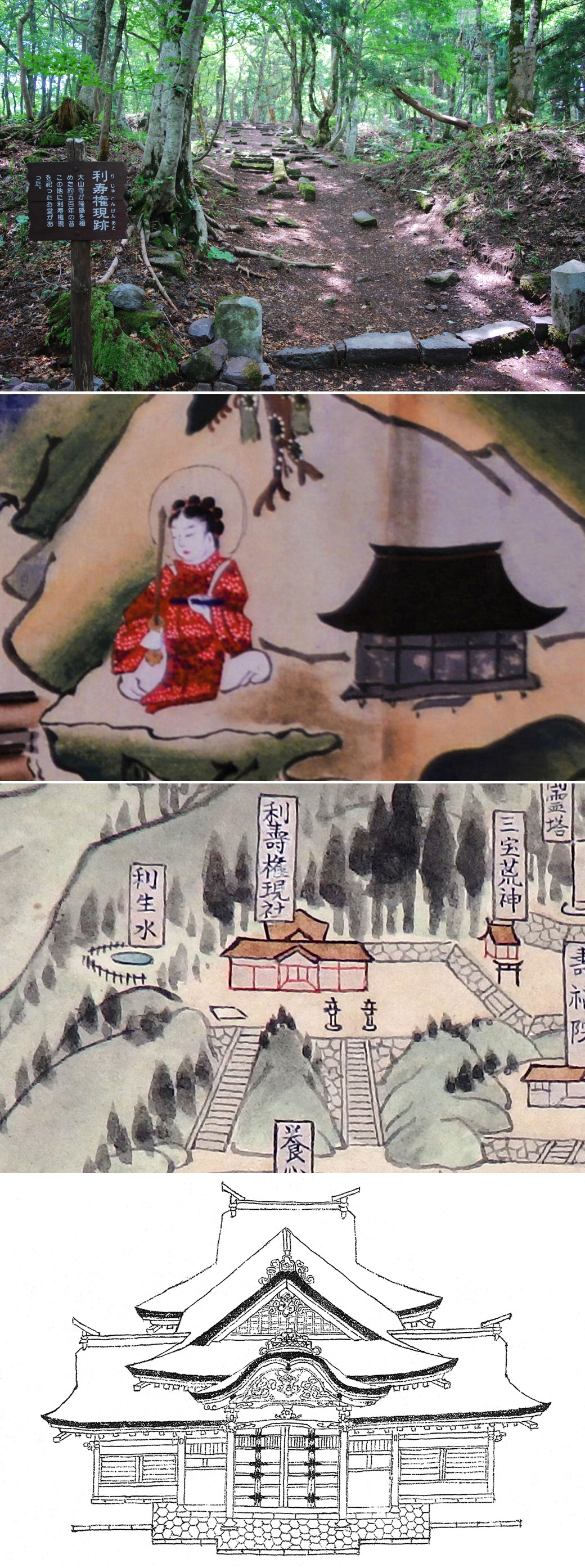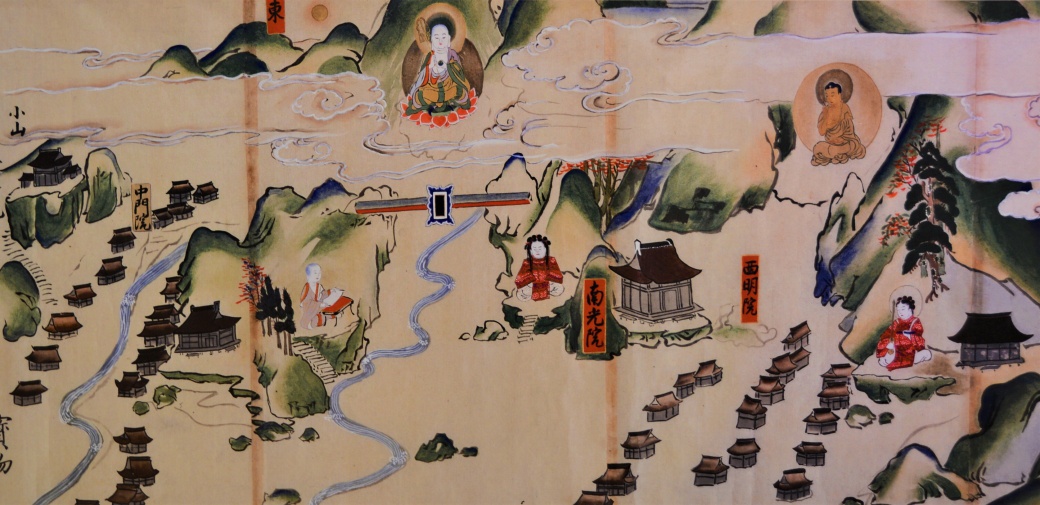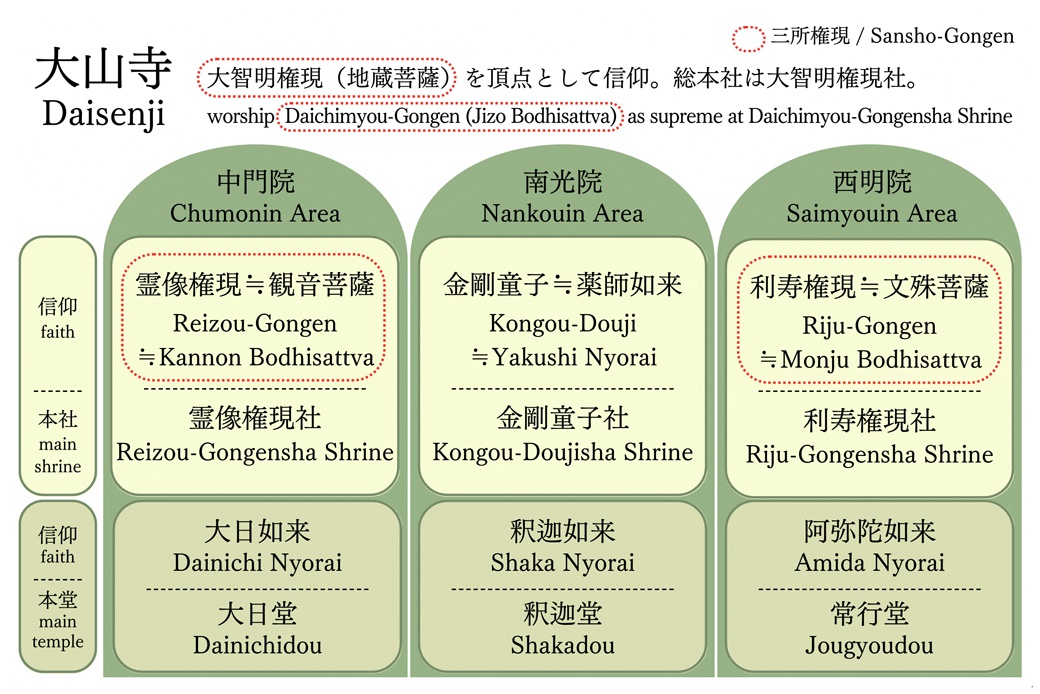

Ruins of Riju-Gongensha Shrine
Ruins of Riju-Gongensha Shrine

Riju-Gongen is one of the three most important deities of Daisenji Temple whose Buddhist form is Monju Boddhisattva. The main shrine belonged to Saimyouin area and is the most westerly of the three deities as Riju-Gongen is said to have flown westwards from the summit pond. Monju Boddhisattva is generally regarded as a symbol of wisdom; however, Riju-Gongen of Daisenji Temple is said to have been beneficial for curing illnesses. Legend has it that Rishousui water is said to cure injuries and ailments, and there are also legends about an oracle that healed illnesses caused by curses.
Shinto-Buddhist Syncretism and Daisenji Temple

Shinto-Buddhist syncretism is a unique form of belief in Japan that is based on the theory of “deities (kami) existing in Japan since ancient times are all temporary manifestations of Buddha.” This was how Buddhism took root in Japan. “Gongen” is the word for Buddhas that have the temporary appearance of kami.
“One day, five ponds were formed on the summit of Mt. Daisen, and Monju Bodhisattva, Kannon Bodhisattva, and Jizo Bodhisattva appeared from the pond in the center. After that, Monju Bodhisattva headed west, Kannon Bodhisattva traveled east, and Jizo Bodhisattva remained in the center. They are called Sansho Gongen collectively."
“The Daisen Sansho Gongen” was the center of worship at Daisenji Temple. Monju Bodhisattva is the manifestation of “Riju-Gongen”, Kannon Boddhisattva is “Reizou-Gongen”, and Jizo Boddhisattva is “the Daichimyou-Gongen.” For this reason, people used to call the main building of Daisenji “the Daichimyou-Gongen Shrine”.
Daisenji Consisted of Three Temple Areas

Many small temples were clustered in Daisen and belonged to one of the three areas: Chumonin, Nankouin, and Saimyouin. Each of the three areas had its own unique beliefs: Chumonin was devoted to Dainichi Nyorai and Reizou-Gongen (the manifestation of Kannon Bodhisattva); Nankouin was devoted to Shakamuni Buddha and Kongou-Douji (the manifestation of Yakushi Nyorai); and Saimyouin was devoted to Amida Nyorai and Riju-Gongen (the manifestation of Monju Bodhisattva). Despite repeated disputes, they united as “Daisenji” by the early 13th Century, having agreed on the faith in the Daichimyou-Gongen (the manifestation of Jizo Bodhisattva) as supreme.

